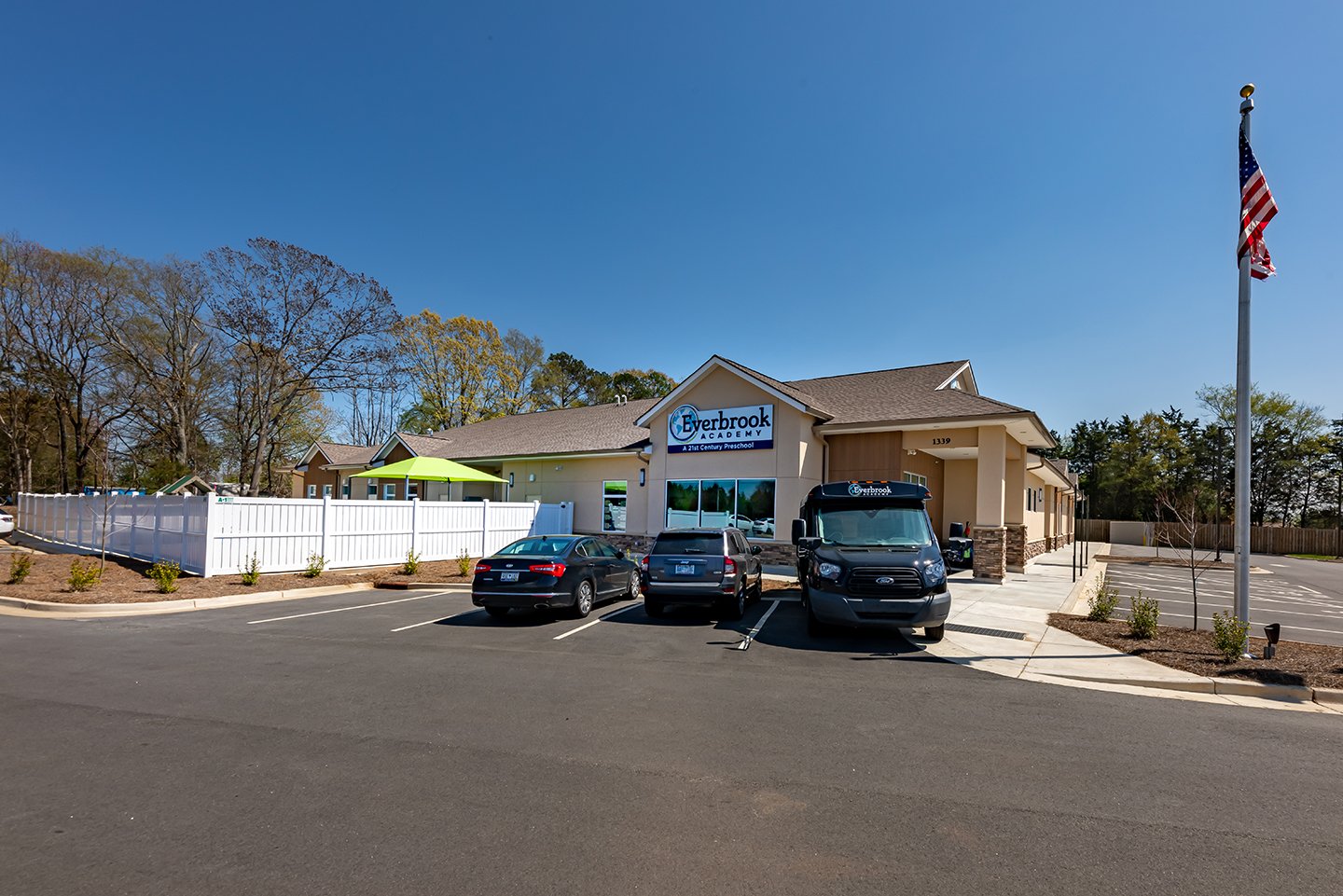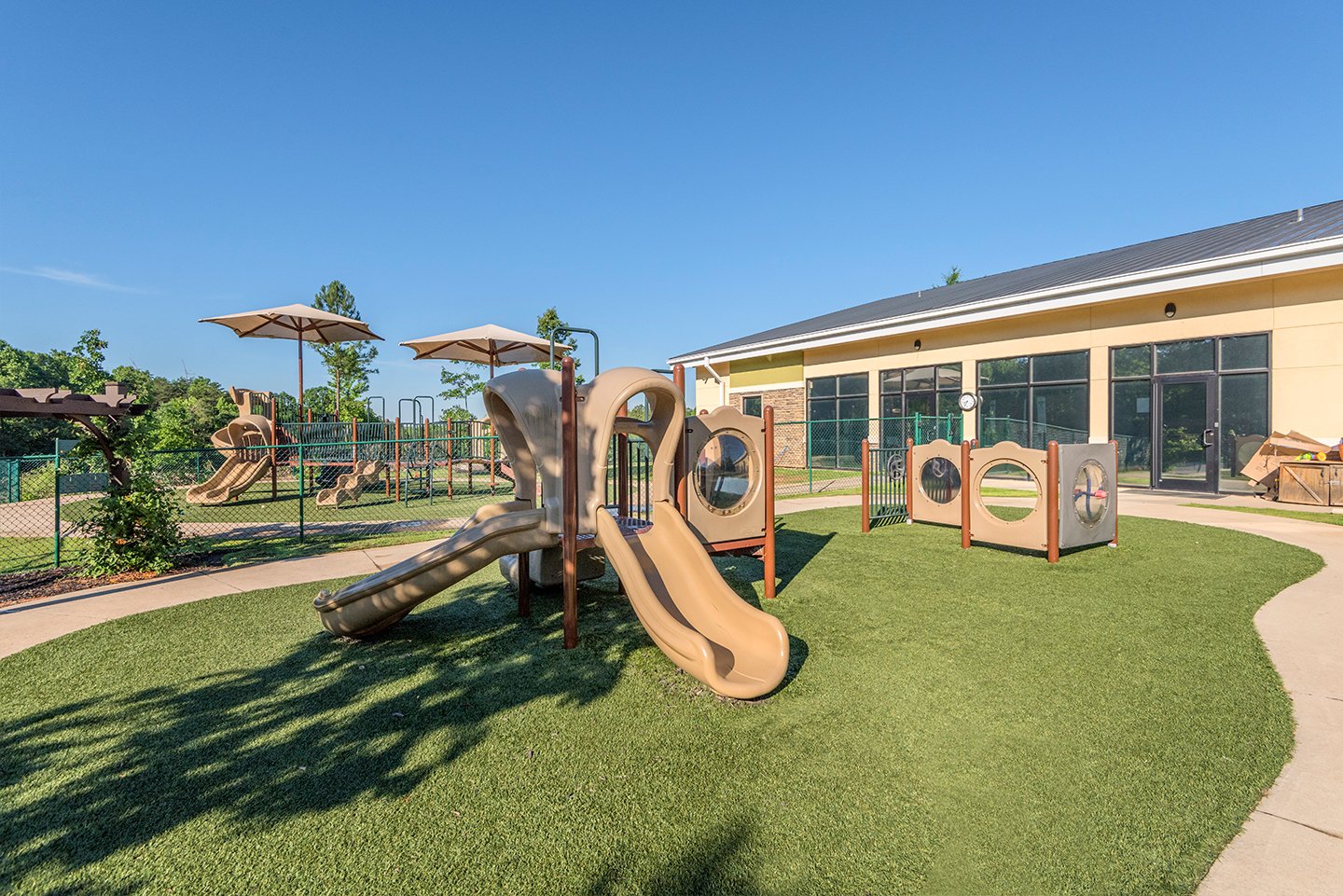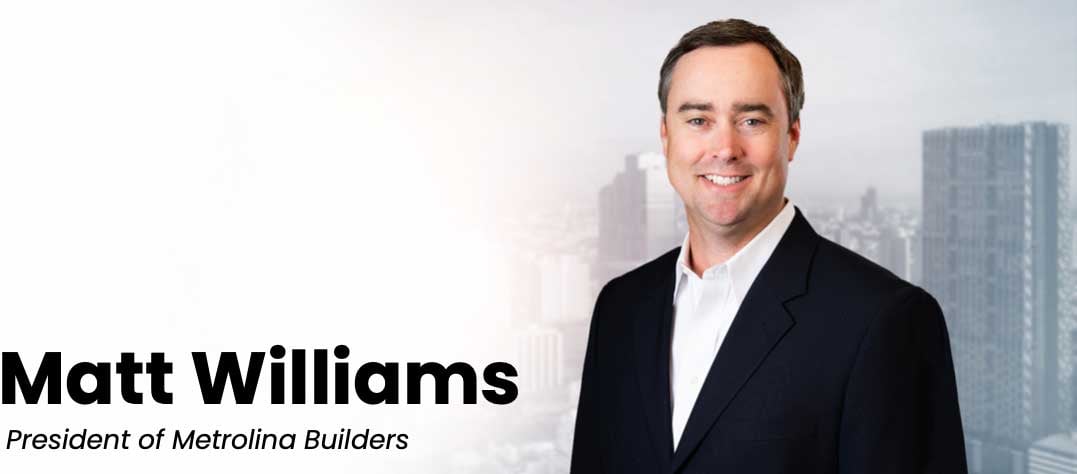
Matt Williams, President of Metrolina Builders, has powerful reasons for how Design-Build can save significant time and money to fast-track your next construction project. This is relevant if you’ve outgrown your current space and are looking to expand, or if you’ve identified real estate to be used as an investment priority for your financial goals.
What are Design-Build Services
Metrolina’s Design-Build program focuses on assembling a collaborative team of experts during the earliest stages for Planning, Design and Pre-construction of a project. This ensures that we can deliver the highest quality product in the most efficient and effective manner possible.
Ultimately, we consider “design-build” to be synonymous with any Project Delivery Method that pairs us with designers (architects and engineers) from the onset of a project. This is true whether we are solely responsible for providing the design work under our contract, or if we are paired with an owner-selected design team. Metrolina has been conducting design-build throughout our entire 50-year history and today, this type of project delivery method represents nearly 70% of our work.
Our overall principles remain the same, regardless of the project scope:
- Collaboration leads to faster project delivery with fewer conflicts and lower cost
- An integrated team including key subcontractors that is geared toward efficiency and innovation will result in savings in both time, resources and money
- A team that is focused on meeting performance needs, not minimum design requirements, often developing innovations to deliver a better project than initially imagined, will result in a higher-quality product
We strive to be valuable team members during the conceptual and design development stages of each project. Rather than replacing the architect and engineers, we partner with them to take an active role in the critical decisions that impact the cost of a project. Unlike most General Contractors, Metrolina Builders is also a licensed Engineering firm. This adds an additional layer of expertise when developing the design for a project.
Who Benefits from a Design-Build Project Delivery Method
Visionary: Someone who simply has a big idea or recognizes the need for a new project, but isn’t quite sure where to start.
Optimizer: This is someone who may have already started the process of planning a project or searching for real estate, or even someone who has been around a construction project before. However, they’ve seen enough or realized there are a lot of independent pieces to be identified and managed and know they need a single entity to assemble and coordinate a collaborative team on their behalf.
Veteran: This person has been involved in complex development projects before. As such, they know firsthand about the challenges, the risks, the time, and the inefficiencies and know there has to be a better way.
The element that ties them all together? They all recognize there has to be a better way.
You’ve probably seen (or heard) just how difficult it can be to identify each piece of the development puzzle independently. From the real estate brokers, land surveyors, geotechnical engineers, the architect, and the contractors, you know how time-consuming and inefficient it would be to move through each step in a traditional linear approach on your own. Taking a project from real estate procurement, planning, design, permitting, and then finally construction is exhausting when you’re trying to do all that on top of your day job.
That’s why Metrolina Builders is here: it’s literally our job.
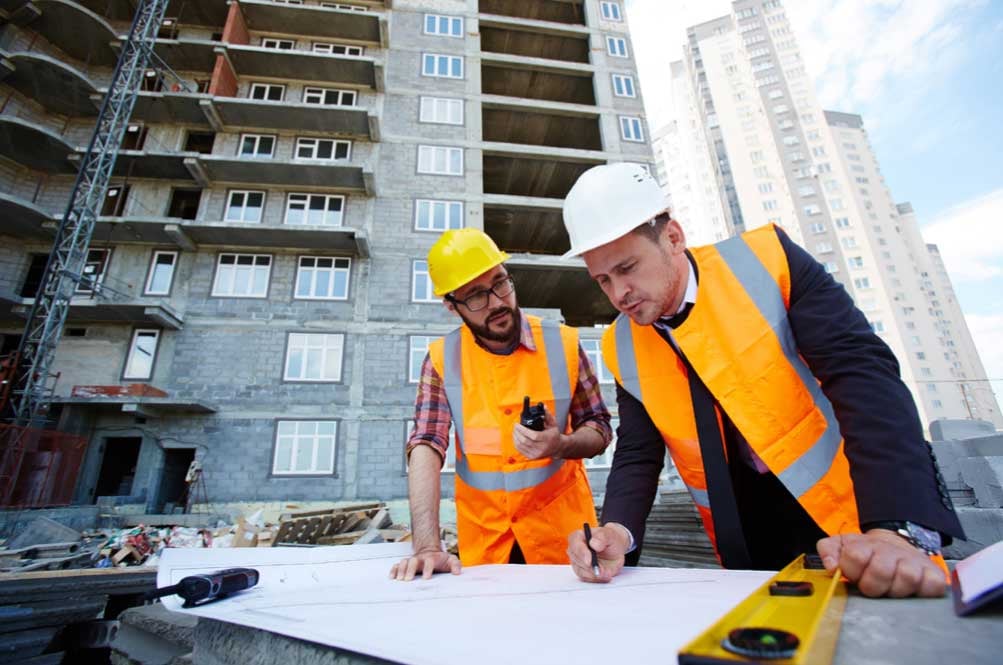
Common Questions You Should Be Asking
There are so many questions involved in the development process. If you’re taking this on alone, you need to be asking them!
Purchase Questions
- Is it the right piece of land
- Is it zoned for my use? If not, can it be? How long will it take to rezone
- Is it the right size for my building needs today? In the future?
- Does the purchase price look like a good deal because development will be unusually expensive due to topography, utilities, soil conditions, etc?
Design Questions
- Is this the right design?
- Will it look and function the way I need it to?
- Have I been presented with all the different design options?
- Is this the most efficient and cost-effective design?
- Have I seen all the costs associated with each design decision?
- Does this design allow me to prioritize my budget spend effectively?
- Do I fully understand the entire project cost before I commit to any purchases or designs?
Team Building Questions
- Have I found the best consultants that can deliver on cost, schedule, and quality?
- Have i assembled all of the right people for my team to make this vision a reality?
- Can this team deliver on my functional, aesthetic, and economic needs
- Is this team as excited about my vision as I am?
- How will I hold the team accountable to deliver and produce at the expected level?
Undertaking a project like this is a lot of work. You’ll be expected to make a lot of choices and commit a lot of your time to see it through. However, we all know that in real estate, time kills deals. These are big, important questions, but you’re going to need to make them fairly quickly in order to move forward.
A development project involves some of the biggest investments you’re going to make. Be sure to ask the right questions in order to ensure success.
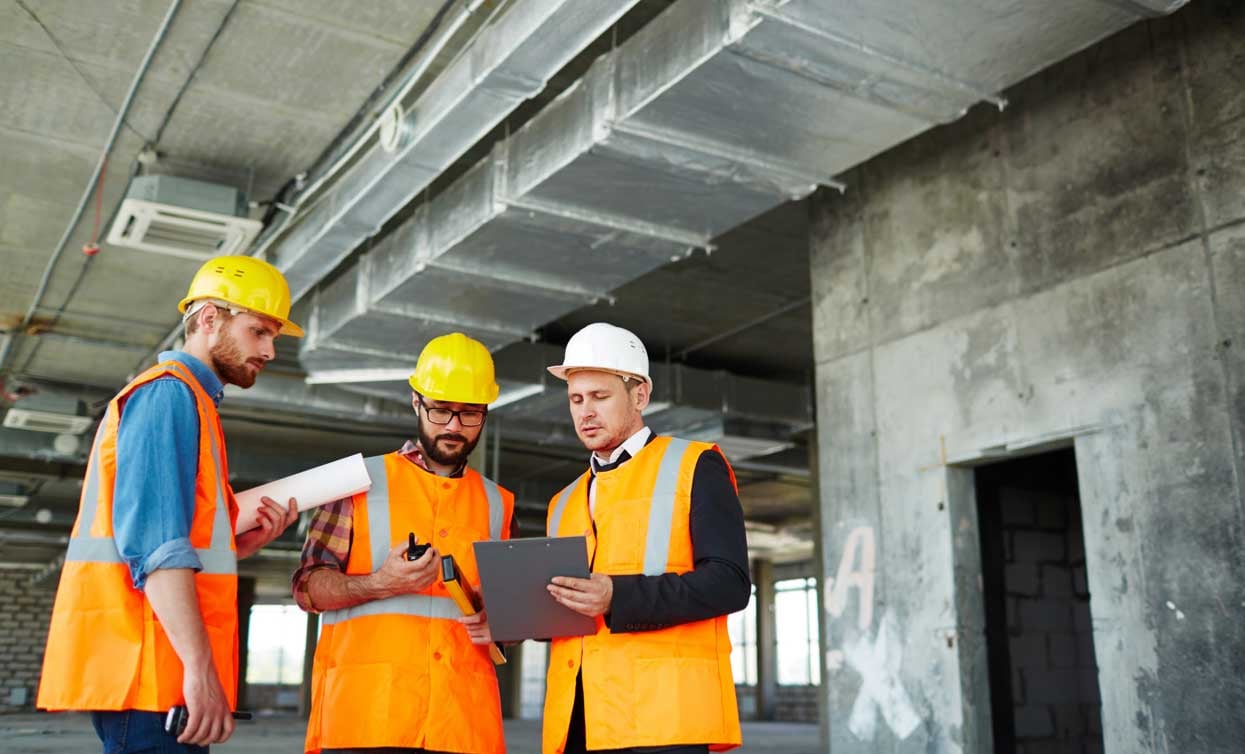
Metrolina Builders Design-Build Goals
If all those questions left you feeling a little overwhelmed, let’s not forget that this project is something to get excited about.
- How will it feel to finish your project, stand back, and say: We did it?
- What will it mean to you to have a building that looks and functions exactly as you envisioned?
- How important is it to get all of this done within your budget?
At Metrolina Builders, our goal is to always have our clients complete projects on time, without delays, and without having to sacrifice quality.
We want you to be able to say that you did it with an incredible team, made up of the best people, who worked together with your best interests at heart. We want you to feel you were supported through each step of the process. We want you to find yourself saying that this incredibly complex process turned out better than you could have ever imagined.
We want your vision to be realized.
That’s the kind of feedback we strive to hear from our clients. Your vision is ultimately why we do what we do, the way that we do it. That commitment is why the same clients keep coming back to build with us on future projects. Our project delivery method is referred to as Design-Build. Essentially, that means we partner with you very early in the life of the project. Using our 50 years of experience, we guide you through the highest and best use of your land, your money, and your time.
Developing the new building is a complex process, but it doesn’t have to be a difficult one.

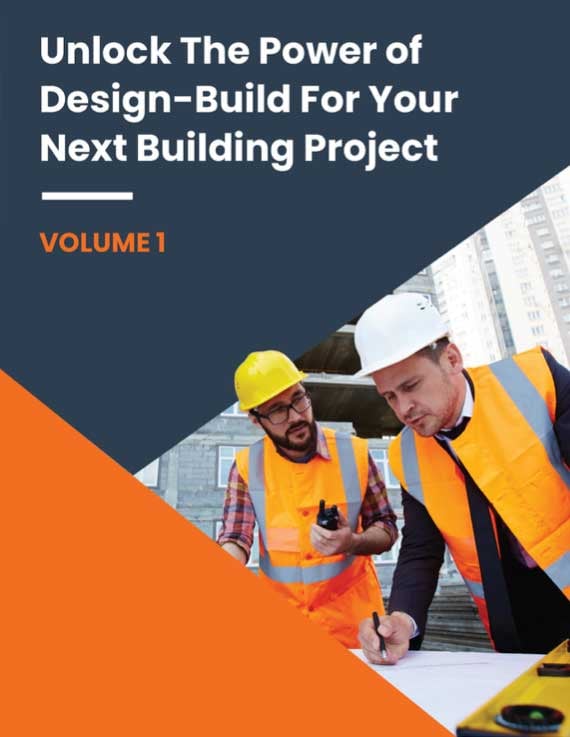
Your guide to Design Build
Discover how you can help lower your costs, improve efficiencies, and achieve a faster timeline by adopting a design-build approach.
When Design and Construction Doesn't Go As Planned
Here’s a real-life example of a design-build process gone wrong.
A few years back we had a lawyer in Charlotte who wanted to build a new three-story office building right in the heart of Charlotte. He had a specific vision for the building, and it was meant to be like something straight off the campus of the University of Virginia. He hired an architect that assembled a beautiful design and produced a full set of drawings, which that client brought to us.
The design was beautiful. Unfortunately, once we priced this set of drawings and how the parts and pieces were designed, it was nearly a million dollars over budget. We worked for weeks to try and pick apart pieces here and there, to bring the budget back in line. But in the end, the only path to move the budget needle as significantly as he needed it moved was to toss the drawings out and start from scratch.
That’s a difficult conversation to have with someone who has recently spent months and over a hundred thousand dollars on a set of drawings they can’t use! In the end, however, we were able to absorb the cost of the original design, spend the money on an entirely new design, and deliver the same square footage and same architectural look and feel as the client had wanted all along.
After all that extra time and cost to him, he couldn’t help but wonder how things could have been different if he started with design-build in the first place. This is where collaborative success is driven, and where the power of a fast-track, single-source provider approach comes into play.
What Design-Build Should Mean For You
First off, a new building project shouldn’t have to consume your every waking moment, or bog you down from doing everything else that you have to do. It shouldn’t put all the work on you to find the right people, coordinate and manage each piece independently, hoping that it all lands where you want.. It doesn’t have to be a linear approach that takes longer than it should and keeps you in the dark on your total costs until months into the process.
You shouldn’t have to wait till you’ve already committed to a piece of land, or even paid for a full set of drawings, to understand what makes sense for your budget and your timeline.
You shouldn’t have to risk delaying the opening of your new building and potentially losing revenue as a result.
Design-build can absolutely benefit you and your project. In fact, it’s been so successful that it’s now become the preferred project delivery method across the country. Nearly half of all construction projects in the US were contracted as design-build last year, representing over $1.2 trillion in construction spending over the last three years. And Metrolina Builders has been doing it this way for over 50 years - before Design-Build was even a formally recognized term. It’s why we started our business - we recognized the inefficiencies in the traditional design-bid-build process and we knew, just like you, there had to be a better way.
Why? It makes your life as the owner easier, and gives you peace of mind that your investment is maximized.
Design-build should mean that your project is thoughtfully designed to fall within budget and make sense for your needs from day one. It should mean that you have less stress, fewer headaches, and more confidence in everything going according to plan.
Four Reasons Why Design-Build is Worth Choosing
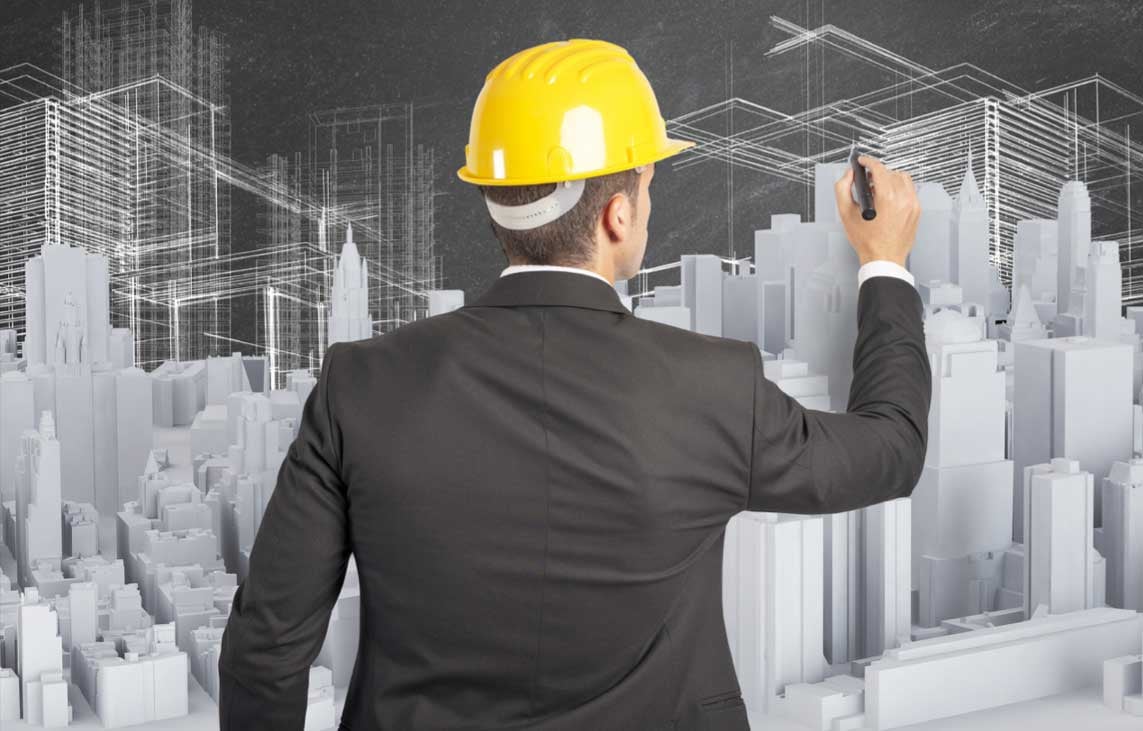
#1: Simplify Your Life with Design-Build
Design-build can simplify your life through single-source accountability. Rather than you having to seek out all the different players, including consultants, architects, engineers, and contractors, design-build streamlines that process. When you’re working with us, there is no need for you to contract each piece independently, and then have them each working from their own “islands”.
The right design builder becomes your single port point of contact, effectively acting as your quarterback. The design-builder takes on the responsibility of procuring and managing all of these different consultants, as well as holding them all accountable to produce. You can still focus on the project, but you don’t have to sacrifice all of your time to do it.
#2: Enable Interactive Collaboration with Design-Build
The next reason I recommend choosing a design-build process is the interactive collaboration. Once the design builder assembles a team under their umbrella, you truly have the most collaborative team possible.
With all the relevant players at the table at the right time, working together, all sharing the understanding of your project goals, there is a huge increase in project clarity across the board. You don’t have anyone working in their own bubble (only mindful of their own timelines and way of doing things), and you know that everyone understands the full demands and goals of the project. This also means they can work collaboratively to analyze and evaluate all of the options in order to solve any problems that arise.
At Metrolina Builders, our approach to design-build also includes engaging key subcontractors during the design process in order to get their critical input. This allows them to be part of collaborating with the architects and engineers before the final design is committed to. This is the true spirit of design-build; it puts all of the right pieces in place while you only have to manage a single entity or single contract.
#3: Gain Control of Costs with Design-Build
Design-build also allows you to gain control of your costs. Now decades into business, we can’t count how many times we’ve been handed a set of plans for a project that’s supposedly ready to go. After assembling pricing, however, we find out that the price far exceeds the owner’s budget.
At that point, the owner is forced to slam on the brakes, backup, and make significant changes to their design. Meanwhile, they’re delaying the start of the project, which means delaying the completion of the project. This happens far too often, and might be one of the biggest reasons that the traditional method of design-then-bid-then-build is broken.
This process of identifying cost savings is also called value engineering. When you have to spend money and time to go back and redesign the initial work, you’re wasting resources. In the traditional process, many value engineering ideas are great ideas....but are not able to be captured because of the ripple effect of implementing them after full design is complete. It’s just too cumbersome.
Another note. Architects are great at what they do: designing fantastic buildings. But they’re not cost experts. They may know what a similar building costs from a previous project, but today, with construction costs so volatile, they can’t really predict what their design is going to cost you. You either have to have your finger on the pulse of the industry and know the impact of every design decision early, or you need to bring in someone who does.
One way to do that is to have the contractor involved early. A contractor is able to put a price tag on every important design decision or option when presented to you so that you can make informed and educated decisions.
Too many times I’ve heard a client say, “I never would have told the architect to do that if I had known it costs that much.”
This is where the collaborative design-build approach, which includes all the players together at the table, gives you much more control over the decision-making process related to your project design. Even more importantly, it allows you to best prioritize your budget. That’s because a collaborative design-build process enables you to keep the budget at the forefront of every design decision. You’ll also know, in a real-time manner, if any design options or decisions are putting that budget in jeopardy.
Furthermore, at Metrolina Builders we do periodic budget checks at various stages of design in order to ensure the final drawings will hit that budget. Design-build, as a process, eliminates any processes that serve to isolate key team members from each other.
#4: Save Time with Design-Build
Using design-build saves you time. We’ve already talked about how the design-build process is more efficient as a result of its collaborative approach, and how that benefits the overall budget.
It’s also a huge benefit in terms of time savings because we fix the broken linear approach and make the process more efficient.
This means that you’re able to get to market faster and start generating revenue sooner. According to the Design-Build Institute of America, design-build projects deliver, on average, about 36% faster than the traditional design-bid-build process.
Even on the back-end construction schedule, there’s nearly 4% less scheduled slide during construction when a design-build is involved. This is because all the players have been involved during design and have vetted out the best path forward. Scrubbing out potential conflicts in the drawings ahead of time allows the construction team to quickly and effectively get to work.
Design-build is the way to offset negative risks associated with the many parts and pieces of a build -- don’t make it more complicated than it needs to be!
Realizing Your Full Vision (And a Final Note on Architects)
One final note: If you already have a favorite architect, you don’t have to kick them to the curb. Most architects recognize the value of the design build process and are open to being part of it. You can pair your architect with a good design builder at the early stages of your project, and reap all the benefits.
A good design builder shouldn’t balk at being asked to work with your architect, so long as everyone truly respects the process and checks their egos at the door. It’s important that everyone on the team understands that all decisions made are for the benefit of you and your project.
There is a way to realize your vision in a more efficient and collaborative manner. Design-build is like having a single source quarterback for your project managing all the heavy lifting in a way that generates the most value for you and your team. I highly suggest you give a strong consideration for your next project.
If you have any questions about design-build (or anything else in my wheelhouse), feel free to reach out to me at any time.

Your guide to Design Build
Discover how you can help lower your costs, improve efficiencies, and achieve a faster timeline by adopting a design-build approach.
